Improving the air defense system of the People's Republic of China against the background of strategic rivalry with the United States (part 7)
Prior to the beginning of 1990, the most long-range and high-altitude firing means of the Chinese Air Defense Forces was the first-generation air defense system HQ-2, created on the basis of the Soviet C-75 (more here) In the second half of the 1980s, on the basis of samples obtained from Egypt, air defense systems NQ-2B (with a launcher on a light chassis) were created in China tank) and HQ-2J (towed). The most widely used modification was the HQ-2J, the later versions of which are still on combat duty. In its capabilities, the HQ-2J complex came close to the Soviet S-75M Volga air defense system. However, the Chinese designers failed to achieve the range and noise immunity characteristics of the S-75M3 Volkhov SAM with the V-759 (5Y23) SAM. Serial production of HQ-2J air defense systems completed about 15 years ago. Until recently, first-generation complexes with missiles fueled with liquid fuel and a caustic oxidizer were the most massive in the PLA air defense system.
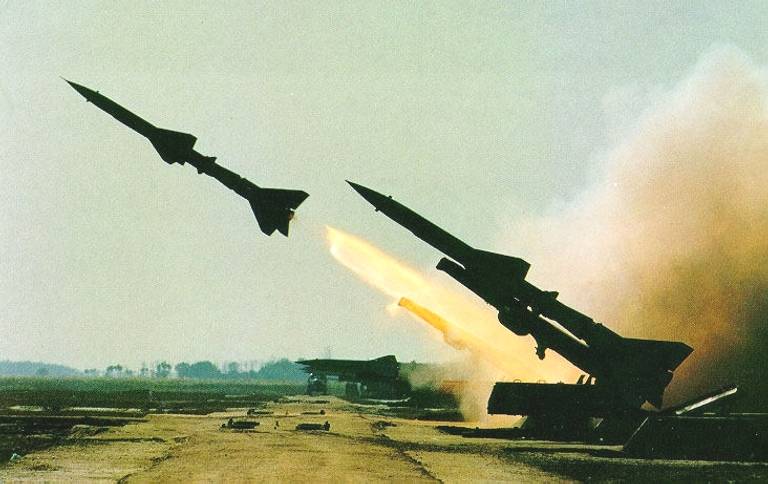
In the 21 century, a significant part of the most recent HQ-2J air defense systems went through a major modernization aimed at improving the noise immunity and increasing the number of simultaneously fired targets. For this purpose, a multifunctional radar with AFAR H-2, developed for the HQ-200 anti-aircraft missile system, was introduced into HQ-12J. According to information published in the Chinese media, non-modernized HQ-2 are being massively removed from service. The remaining infrastructure and launch positions after reconstruction are used to deploy anti-aircraft missile systems: HQ-9, HQ-12 and HQ-16.
By the beginning of the 1980-x, it became clear that China was far behind in the field of modern air defense systems. At that time in the PRC, attempts were made to independently design medium-range and long-range air defense systems. But due to lack of experience and the inability of the PRC radio-electronic industry to create world-class products, their own developments were not brought to mass production. Nevertheless, the accumulated results and developments were useful in the creation of short-range and medium-range anti-aircraft systems, which were a conglomeration of technical solutions borrowed from Western designs and their own design finds.
In 1989, at the aerospace show in Dubai, the HQ-7 short-range air defense system was demonstrated for the first time. This complex was created within the framework of the Sino-French defense cooperation based on the Crotale mobile air defense system.
The HQ-7 SAM system battery consists of a combat control vehicle with an air target detection radar (18 km range) and three armored combat vehicles with radio command guidance stations, each of which has 4 SAM.
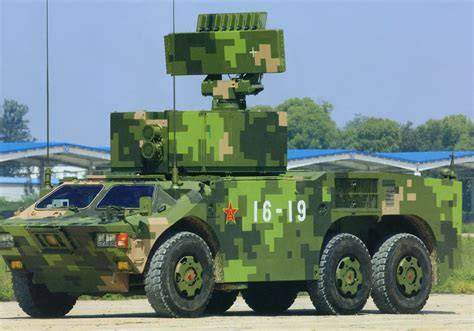
In the modernized HQ-7В air defense missile system, a combat command and control unit equipped with radar with phased array (detection range 25 km) was used, and the maximum missile launch range was increased from 12 to 15 km. At the same time, noise immunity and probability of damage are significantly increased. According to Chinese data, in a simple jamming environment at a distance of 12 km, the probability of destroying a MiG-21 type target flying at a speed of 900 km / h is a two-barreled volley of 0,95. LAW HQ-7 / 7В are in service with the air defense units of the Ground Forces, and are used by the Air Force to protect airfields.
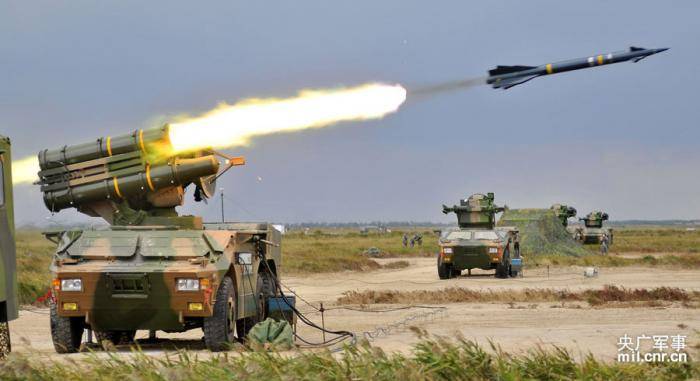
Anti-aircraft missile systems of this type in the past were covered by large air bases located along the Taiwan Strait. For combat duty on the protection of stationary objects from the anti-missile battalion, usually one of the three firing batteries was allocated on a rotational basis. Duration of duty on 10 days.
The airbases and positions of long-range anti-aircraft missile systems are also covered by the HQ-64, HQ-6D and HQ-6A air defense systems. As part of these complexes are used missiles created on the basis of Italian aviation medium-range missiles with a semi-active homing Aspide Mk. 1. The Italian missile, in turn, has much in common with the US air-to-air AIM-7 Sparrow. In the mid-80s, as part of military-technical cooperation, Italy supplied documentation for the Aspide Mk.1 SD. On the basis of the Italian license and components in the PRC in 1989, the assembly of anti-aircraft missiles and air-to-air missiles began, intended for arming J-8II interceptors. But after the events in Tiananmen Square, the supply of parts for assembling missiles ceased. In this regard, a limited number of HQ-61 air defense systems were built, which also had serious reliability problems. Currently, all HQ-61 air defense systems are decommissioned.
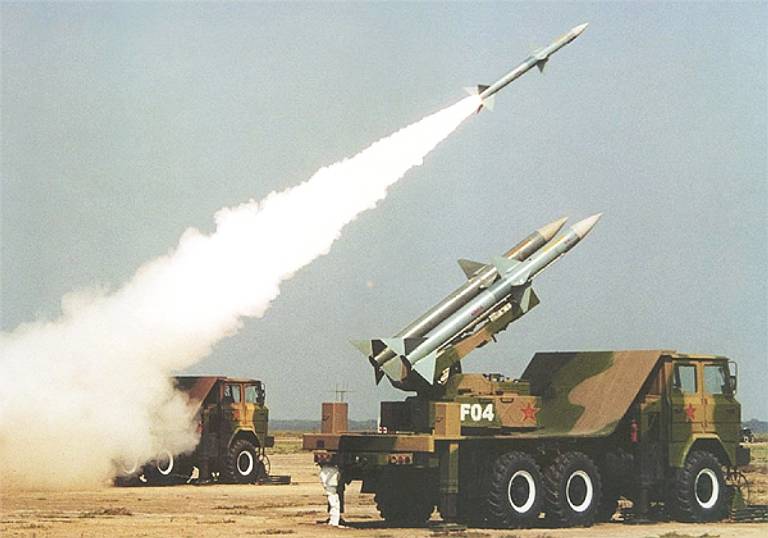
Only in the second half of 90-s Chinese industry managed to master the independent release of the clone of the Chinese "Asp". The rocket, adapted for use in the ZRK, received the designation LY-60.
The LY-60 anti-aircraft missile with a mass of 220 kg, when launched from a ground-based PU, accelerates to 1200 m / s and is capable of hitting air targets at a range of up to 15000 m. -60A. Unlike the HQ-64 ADMS on the HQ-6, which was put into service in the 6 year, the missiles are housed in closed transport-launch containers. The number of missiles, ready to use on self-propelled launcher, increased from two to four.
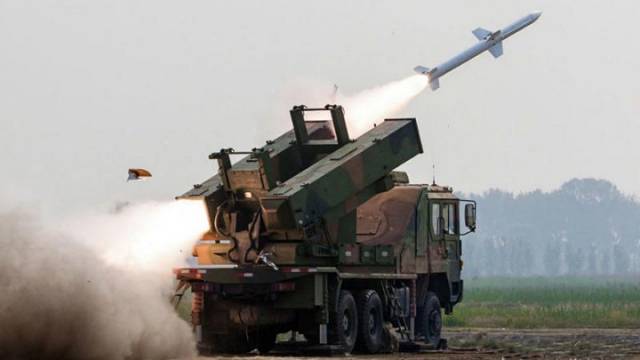
It is reported that, thanks to the use of more energy-intensive solid fuel, the rocket speed was increased to 4 M, and the launch range increased to 18000 m. Increased reliability of the hardware and the radar detection range. The next modification of the HQ-6D has the ability to integrate SAMs into the long-range air defense missile system, and thanks to the introduction of new microprocessors, the speed of information processing and the number of target channels are increased. In the ammunition introduced new missiles with active radar homing, which allows for the regime of "fired and forgotten." The HQ-6A (artillery) modification included the 30-mm seven-barreled anti-aircraft artillery unit, the Ture 730, with a radar-optical guidance system, based on the Goalkeeper, a Dutch ship-based anti-aircraft artillery system.
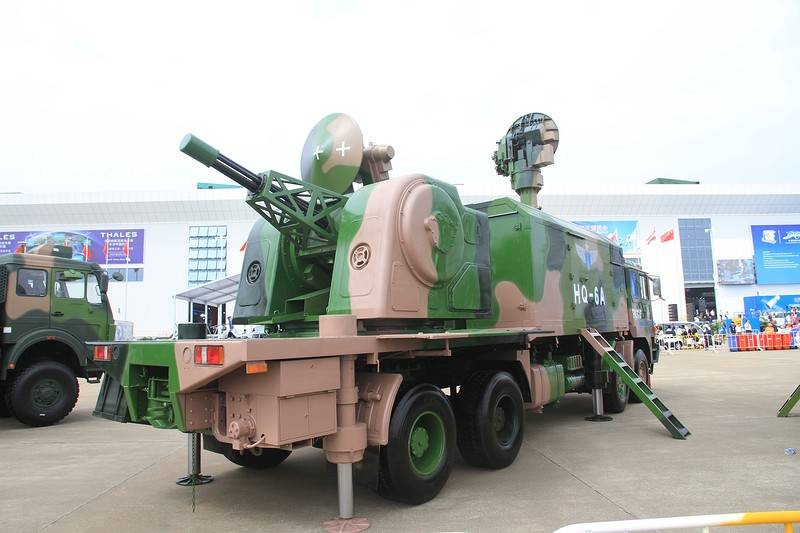
There is reason to believe that the HQ-6D air defense systems built earlier are being upgraded to the HQ-6А level. A two-axle trailer with an anti-aircraft installation, the Tour 730, is added to the control point of the anti-aircraft missile system. It is believed that this increases the capabilities of the HQ-6А complex for the destruction of low-altitude air targets, which has become anti-aircraft missile and artillery. According to the reference data, as part of the air defense system of the People's Republic of China, combat duty is carried by at least 20 ADMS HQ-6D / 6А.
The self-developed medium-range air defense system HQ-12. The design of this complex, designed to replace the HQ-2 air defense system, was initiated in the 1979 year. However, the creation of a solid-fuel anti-aircraft missile with the same range and altitude as that of the HQ-2 air defense missile systems proved to be a very difficult task. The first sample, known as KS-1, was presented to the general public in 1994 year. In this case, the SJ-202В missile guidance station, which was part of the HQ-2J SAM system, was used in combination with solid-propellant missiles. However, the characteristics of this air defense system turned out to be lower than planned, and there were no orders for it from the Chinese military.
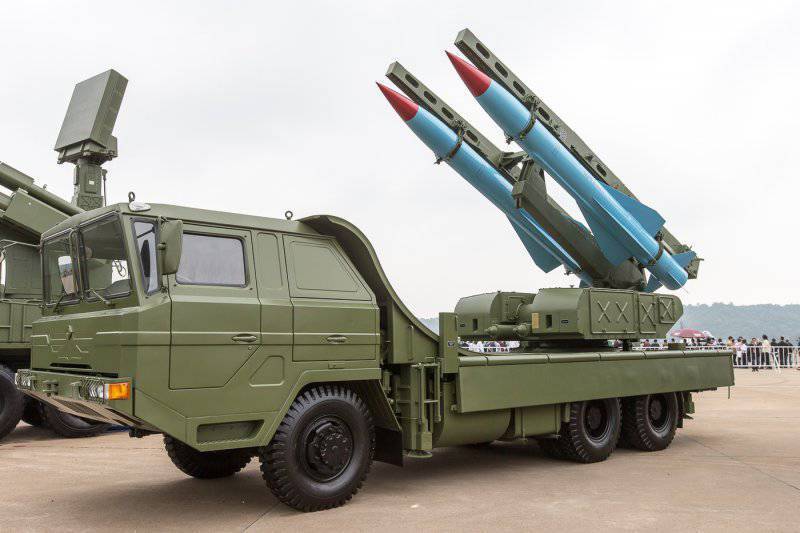
Only later, 30 years after the start of development in the Chinese anti-missile forces received the first air defense systems HQ-12 (KS-1A). The main difference was the new multifunctional radar with AFAR H-200 and missiles with semi-active radar seeker. The HQ-12 anti-aircraft missile division includes a missile detection and guidance radar, six mobile launchers, which in total have 12 ready-to-use missiles and 6 transport-charging vehicles with 24 missiles.
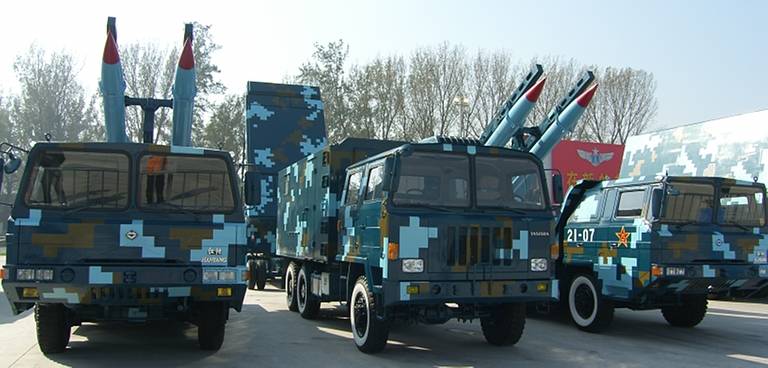
According to information provided at international aerospace showrooms, an anti-aircraft missile with a mass of 900 kg is capable of hitting air targets at a distance of 7-45 km. The maximum target speed is 750 m / s, the overload is 5 g. To date, the HQ-12 air defense system is largely obsolete. However, its mass production and deployment continues. The air defense forces of the People's Republic of China have at least 20 air defense divisions HQ-12.
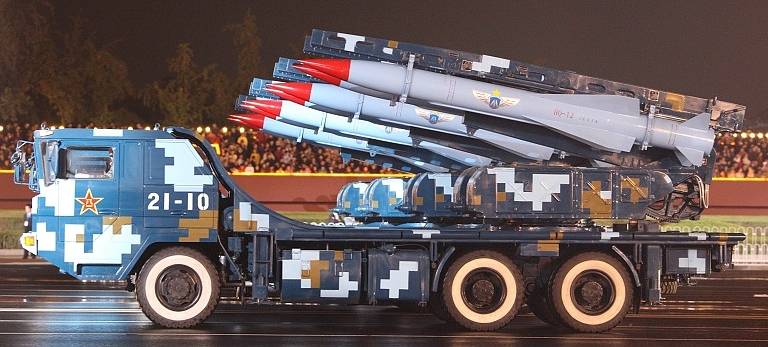
After the normalization of relations between our countries, Beijing expressed interest in acquiring modern air defense systems. In 1993, the PRC received four S-300PMU anti-aircraft missile systems. The cost of the contract concluded at the end of 1991 of the year was $ 220 million. Before the start of deliveries, several dozen Chinese specialists were trained in Russia. As part of the C-XNUMPPMU missiles delivered to the People's Republic of China, there were 300 hook-on 32P5T launchers with a KrAZ-85В tractor. On each towed installation there was a 265 transport-launch container with 4ВХNUMXР missiles. The S-5PMU ZRS is capable of firing 55 air targets simultaneously at a distance of up to 300 km, with two missiles aimed at each target.
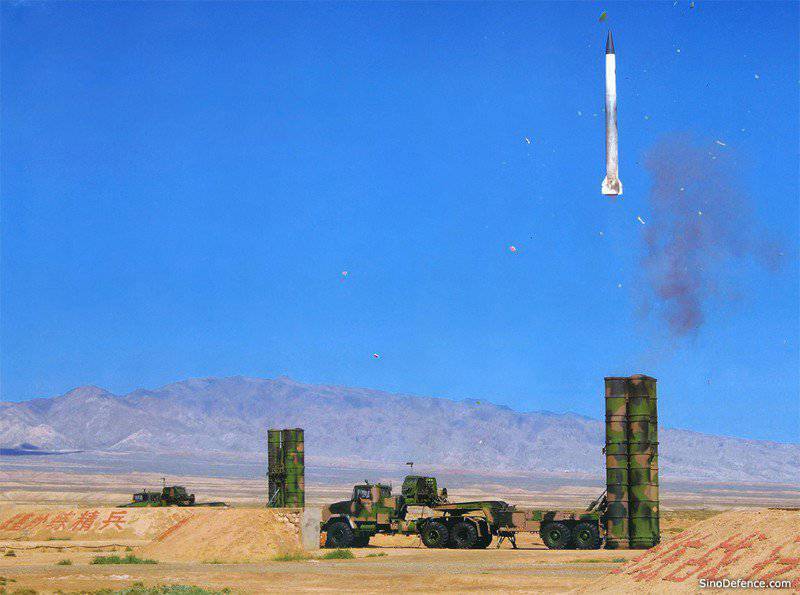
The S-XNUMPPMU ZRS perform training and control firing at the “Site No. 300” missile range in Gansu Province
In total, within the framework of the contact, 256 anti-aircraft missiles were sent to the PRC - that is, for each launcher there was a main and additional ammunition. In 1994, 120 additional missiles were delivered from Russia for training and firing practice.
The C-300PMU anti-aircraft missile system was an export version of the C-300PS with towed launchers. In terms of the firing range and the number of simultaneously fired targets, the C-300PMU SAM systems were an order of magnitude superior to the Chinese HQ-2J SAM system. An important factor was the fact that solid propellant XURN XXUMXX5P did not require maintenance for 55 years. Test firing at the site "Site number 10" in the desert region of Gansu Province in the north-west of China made a big impression on the Chinese military leadership, after which it was decided to conclude a new contract for the purchase of C-72P. In 300, the next Russian-Chinese agreement was signed for the purchase of 1994 divisions of upgraded C-XNUMPPMU-8 (export version of C-300PM) worth $ 1 million. The 300 launchers 400P32SE / Zn and XNNXXNEX and XML and 5 85MS and 196 48E / Zn and 6 150 million and XNUMX million XNUMX million were signed under the contract. Advanced missiles have a range of up to XNUMX km. Half of the contract was paid for by barter deals for the purchase of Chinese consumer goods.
Test and training firing ZRS C-XNUMPPMU-300, conducted by 1 in August 22 during exercises at the landfill in Gansu Province
In the 2003 year, China expressed its intention to acquire the improved C-300PMU-2 (export version of the C-300PM2). The order included 64 PU 5P85EX2 / DE2 and 256 ZUR 48H6X2. First divisions delivered to customer in 2007 year. The improved anti-aircraft system is capable of simultaneously firing 6 air targets at a distance of up to 200 km and an altitude of up to 27 km. With the adoption of the C-300PMU-2, the PLA anti-aircraft defense system for the first time received limited interception capabilities of operational-tactical ballistic missiles at a distance of up to 40 km.
According to the data published in open sources, the People's Republic of China has delivered: 4 srdn C-300PMU, 8 srdn C-300PMU1 and 12 srdn C-300PMU2. In addition, each divisional kit includes 6 launchers. The result is that China acquired the 24 of the C-300PMU / PMU-1 / PMU-2 division with 144 launchers. Given the fact that the assigned C-XNUMPPMU resource is 300 years, the first "300" set in the People's Republic of China are at the end of their life cycle. In addition, the production of 25B5 (B-55) missiles was completed more than 500 years ago, and the warranty period of storage in an air-tight TLC is 15 years. Based on this, it can be assumed that the first 10 of the C-4PMU division, delivered in the 300 year, will soon be removed from combat duty.
Almost immediately after the C-300PMU appeared at the disposal of the PLA air defense forces, work began in the People's Republic of China to create an air defense system of the same class. However, one should not think that long-range anti-aircraft missile systems with solid-propellant missiles for Chinese specialists were an absolutely unknown topic. By the end of 80-x in China, there were developments on the effective formulations of solid rocket fuel, and cooperation with Western companies allowed to advance electronics. A significant contribution was made by Chinese intelligence, in the West it is considered that when creating the HQ-9 air defense control system, a lot was borrowed from the MIM-104 Patriot long-range air defense complex. So the American experts write about the similarity of the multifunctional Chinese radar HT-233 with AN / MPQ-53, which is part of the Patriot air defense system. At the same time, there is no doubt that the designers of China Academy of Defense Technology spied on a number of technical solutions in the Soviet C-300P system. In the first modification of the HQ-9 ZRS, command-guided missiles with radar sighting through a rocket were used. Correction commands are transmitted aboard the rocket via a two-way radio channel by radar illumination and guidance. The same scheme was applied in the set in the PRC together with the C-300PMU ZUR 5В55Р.
Just as in the C-300P, in the Chinese HQ-9 SAM, a vertical start is used without first turning the launcher towards the target. In terms of the composition and principle of operation of the ZRS, the HQ-9 is also similar to С-300П. In addition to the multifunctional tracking and guidance radar, a mobile command post, the division includes a low-altitude detector Type 120 and a search radar Type 305В, created on the basis of the YLC-2 standby radar. The HQ-9 launcher is made on the Taian TA-5380 four-axle chassis and resembles the Russian C-300PS visually. In total, in the anti-aircraft missile battalion there can be up to nine self-propelled launchers, but usually there are six of them. Thus, ready to use ammunition 24 missiles. The HT-233 fire control radar is capable of simultaneously tracking up to 100 targets and firing 6 of them, directing missiles at each 2.
The creation of the HQ-9 SAMs was accelerated, and the first pre-production model was demonstrated in 1997. The characteristics of the first HQ-9 of the first modification are not known reliably; apparently, originally the Chinese air defense systems did not exceed the range of C-300PMU-1 / ПМУ-2 purchased in Russia. According to advertising data, voiced during aerospace showrooms and weapons exhibitions, the FD-2000 export version uses an anti-aircraft missile weighing kg 1300 with a warhead weight 180 kg. The maximum speed of the rocket is 4,2 M. Firing range: 6-120 km (for the modification of HQ-9А - up to 200 km). Interception height: 500-25000 m. According to the developer, the system is capable of intercepting ballistic missiles in a radius from 7 to 25 km. The deployment time from the march is about 6 minutes, the reaction time is 12-15 seconds.
At present, the improvement of the HQ-9 SRS is actively continuing. In addition to the upgraded anti-aircraft system HQ-9A, which was put into service in 2001 year and is being built in series, we know about the tests of HQ-9В - with enhanced anti-missile properties, which allows you to intercept ballistic missiles with a range up to 500 km. This anti-aircraft system, tested in the 2006 year, used infrared-guided missiles on the final trajectory. Model HQ-9С uses extended range missile defense systems with active radar homing head. Also in the ammunition introduced a missile with a passive radar GOS, effective against EW and DRLO aircraft. Chinese representatives said that, thanks to the use of high-speed processors, the speed of data processing and issuing guidance commands on modern versions increased several times compared to the first HQ-9 model.
The HQ-19 system with heavy interceptor missiles is designed to combat medium-range tactical and ballistic missiles, as well as low-orbit satellites. In China, this system is called an analogue of the Russian C-500. To hit targets, a kinetic tungsten warhead designed for a direct hit is supposed to be used. The adjustment of the course at the end section is carried out with the help of miniature disposable jet engines, of which there are more than a hundred in the warhead. According to US data, the adoption of HQ-19 can occur 2021 year, after which the Chinese armed forces will have a missile defense system capable of fighting ballistic missiles with a launch range of up to 3000 km.
In the past, the People's Republic of China claimed that during the firing range, the Chinese HQ-9С / В had demonstrated capabilities that were not inferior to the Russian C-300PMU-2 anti-aircraft missile system. According to information released in the United States, obtained by means of radio engineering and satellite intelligence, in 2018, 16 of the HQ-9 air defense missile systems were deployed in the PLA air defense system.
In this case, the breakdown by modification is not provided. Western experts believe that the anti-aircraft systems built after the 2007 year are currently being exploited. The People's Republic of China declares that, thanks to the progress made in the creation of new materials and alloys, the development of compact high-speed electronics and solid rocket fuel with high energy characteristics, it was possible to create a third-generation anti-aircraft missile system during the creation of HQ-9, bypassing the second generation.
In 2011, the official source of the People’s Liberation Army of China recognized the existence of the HQ-16 air defense system. In the western reference media, it is said that during the creation of the HQ-16 air defense system the latest Russian developments in Buk air defense systems were used. The serial modification, in which, following the results of military tests, the identified deficiencies were eliminated, is known as HQ-16А.
Self-propelled launcher and model of anti-aircraft missile used in the composition of the air defense system HQ-16A
Externally, the missile used as part of the HQ-16, strongly resembles the Soviet air defense system 9М38М1, and also has a semi-active radar guidance system, but the Chinese complex has a vertical missile launch and is more suitable for sustaining long-term combat duty in a stationary position.
The main purpose of the HQ-16A air defense system is to combat tactical and deck-based aircraft, special attention was also paid to the possibility of hitting low-altitude air targets with a minimum EPR. According to Global Security, the first version of the HQ-16 had a firing range of up to 40 km. The rocket with a mass of 615 kg and a length of 5,2 m accelerates to 1200 m / s. The HQ-16А SAM can intercept an air target flying from 15 m to 18 km. The probability of hitting one missile defense for cruise missiles flying at an altitude of 50 meters at a speed of 300 m / s is 0,6, for a target of the type MiG-21 at the same speed and altitude 3-7 km - the probability of hitting 0,85. In an improved modification of the HQ-16В, the maximum launch range for subsonic targets flying in the altitude range 7-12 km is extended to 70 km. According to the official version, this anti-aircraft missile system should occupy an intermediate position between the HQ-12 and HQ-9.
The structure of the battery SAMs HQ-16A includes 4 launchers and a station for illumination and missile guidance. The actions of anti-aircraft batteries are guided from the divisional command post, where the information from the three-coordinate radar of the circular review is received. A total of three fire batteries in the division.
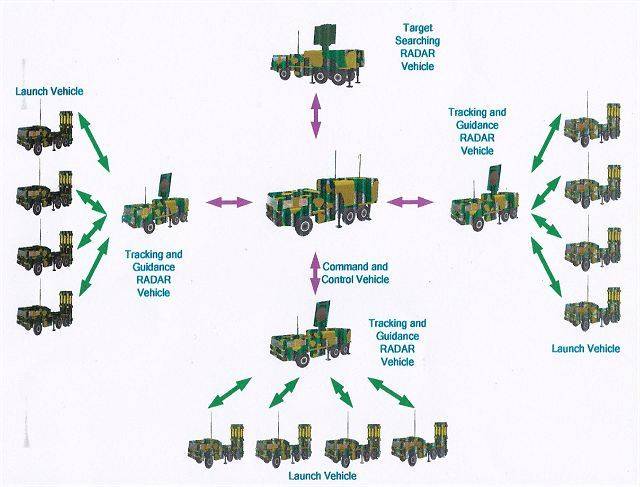
All elements of the HQ-16А SAM system are located on the Taian TA5350 off-road three-axle chassis. HQ-16А Division on hard-surface roads can move at a speed of 85 km / h, power reserve 1000 km. It is able to cross vertical obstacles up to 0,5 m in height, trenches up to 0,6 m and force a ford without depth to 1,2 m. On each SPU there are 6 ready-to-use anti-aircraft missiles. Thus, the total ammunition of the anti-aircraft division is 72 SAM. As of 2017 year, the PLA Air Defense Forces had at least 4 srn HQ-16A.
Three-axis circular radar with a PARA is able to see the target type "fighter" at a distance of 140 km and an altitude of 20 km. Radar capabilities allow you to detect up to 144 and track up to 48 targets simultaneously. The HQ-16А ADMS guidance station is capable of tracking targets at a distance of up to 80 km, simultaneously accompanying 6 targets and firing 4 of them, directing two missiles at each.
It is reported that China has successfully passed the tests of the HQ-16В anti-aircraft system with an increased launch range. Also in 2016, information about the HQ-26 complex appeared, in which, due to the increase in the rocket diameter, its acceleration characteristics were increased, and the range of damage according to unconfirmed data is 120 km. At the same time, the anti-missile capabilities of the complex have been significantly expanded. If the Chinese specialists really succeeded in creating an air defense missile system with the declared characteristics, then by its combat capabilities it can be close to the latest Russian air defense system C-350 "Vityaz".
To be continued ...
Based on:
https://www.globalsecurity.org/military/world/china/hq-16.htm
https://www.globalsecurity.org/military/world/china/hq-9.htm
http://www.indiandefensenews.in/2016/07/china-upgrading-air-defenses-at.html
http://english.chinamil.com.cn/view/2018-08/31/content_9268695.htm
https://defenceforumindia.com/forum/threads/china-to-hold-military-parade-to-mark-victory-of-anti-japanese-war-on-3rd-sep.68826/page-4
http://trishul-trident.blogspot.com/2018/11/airshow-china-2018-highlights.html
ttps: //www.scmp.com/news/china/military/article/2179564/chinese-missile-force-puts-new-russian-s-400-air-defence-system
http://chinesemilitaryreview.blogspot.com/2014/11/fb-10-short-range-air-defense-missile.htmlhttp://www.ecns.cn/hd/2018-08-01/detail-ifywsspt3615294.shtml
https://bmpd.livejournal.com/2230165.html
https://imp-navigator.livejournal.com/175192.html
http://www.ausairpower.net/APA-PLA-IADS-SAMs.html
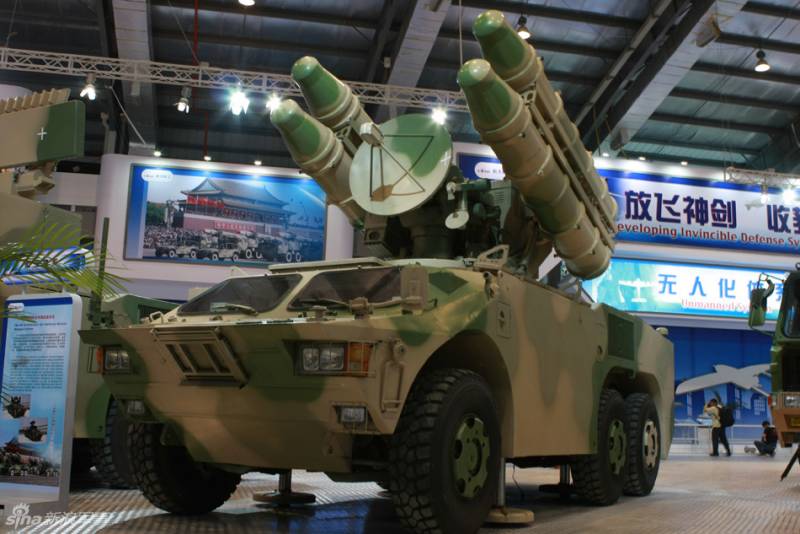
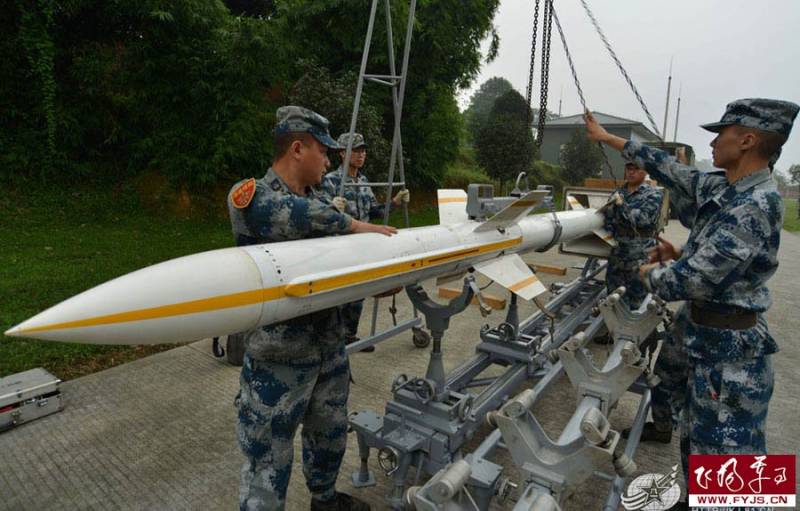
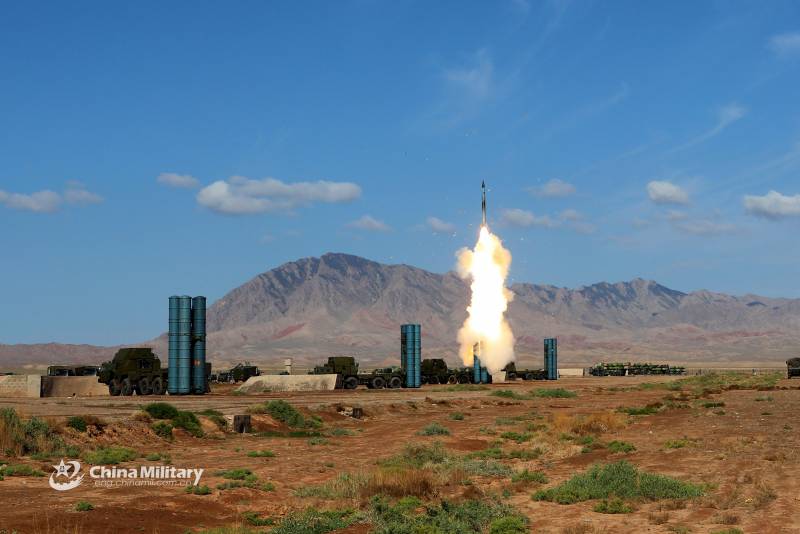
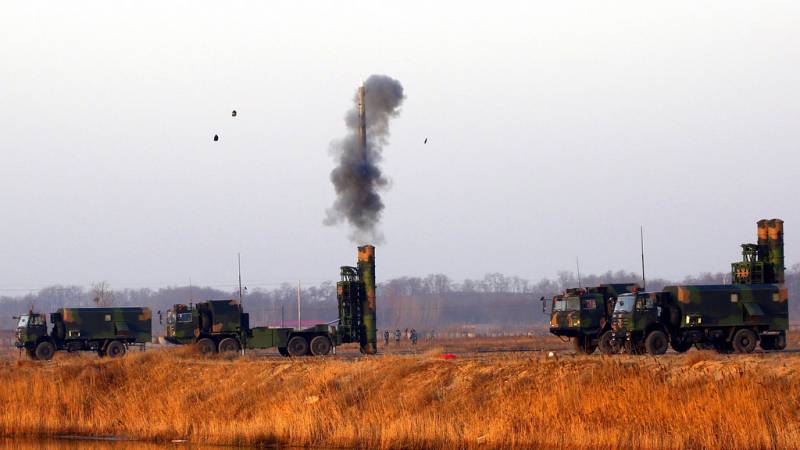
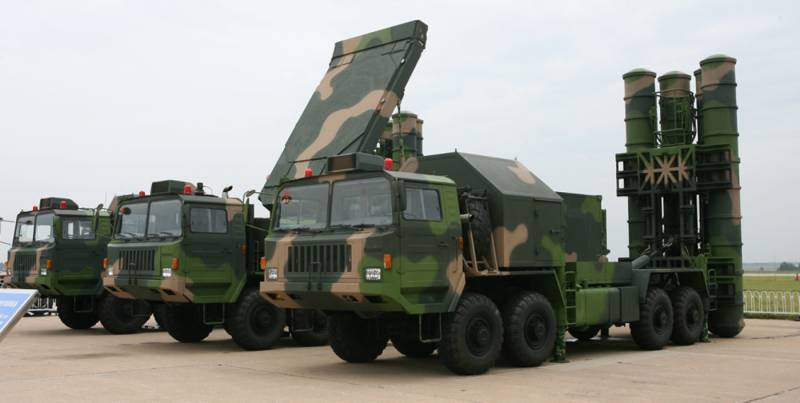
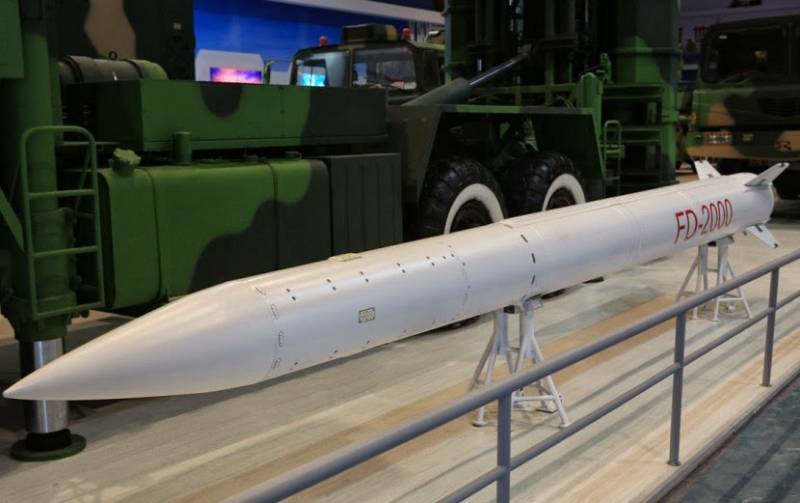
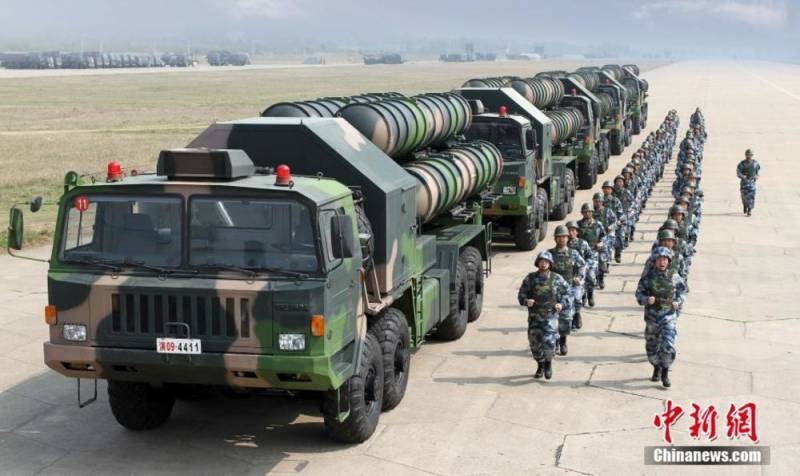
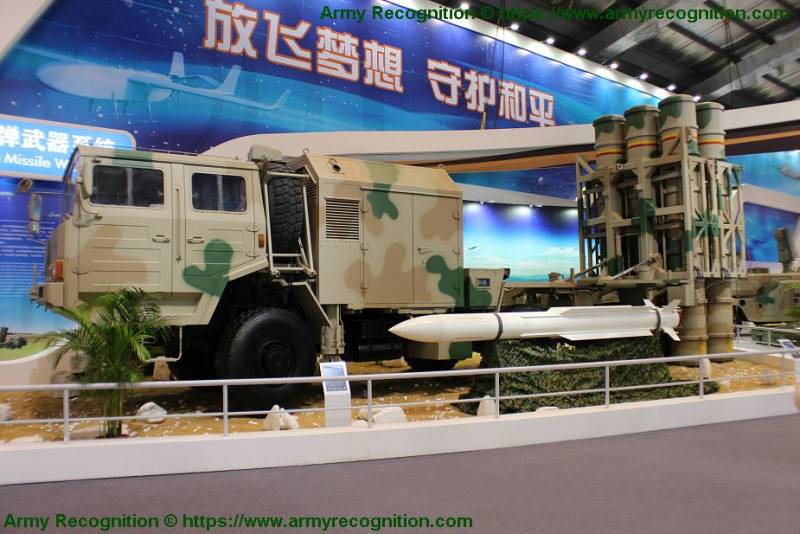
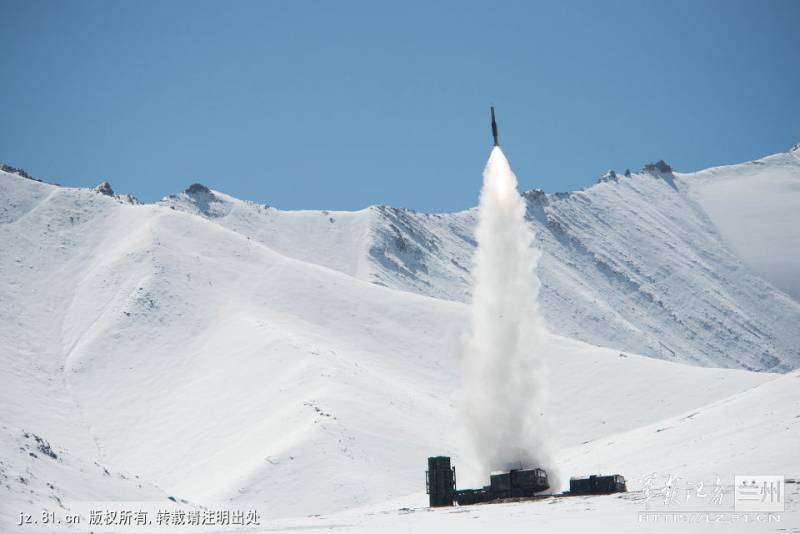
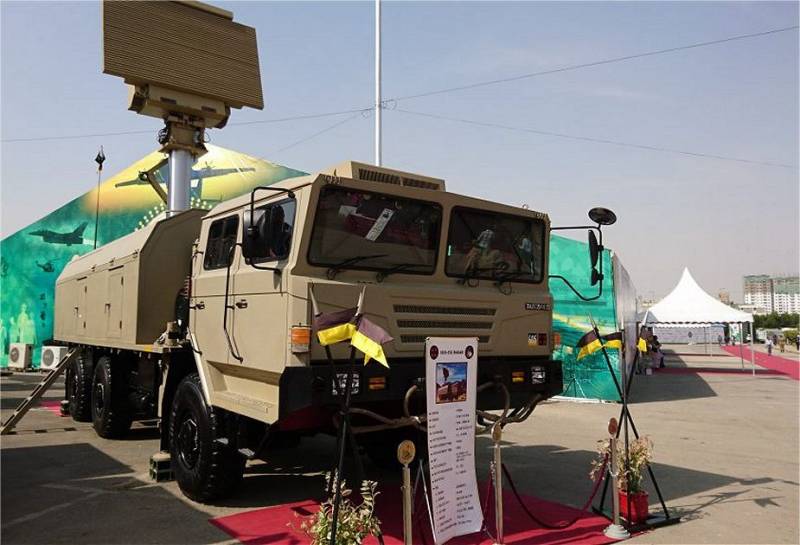
Information